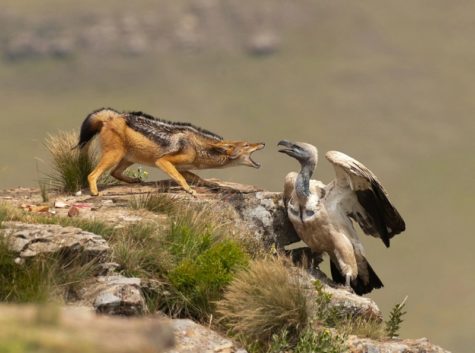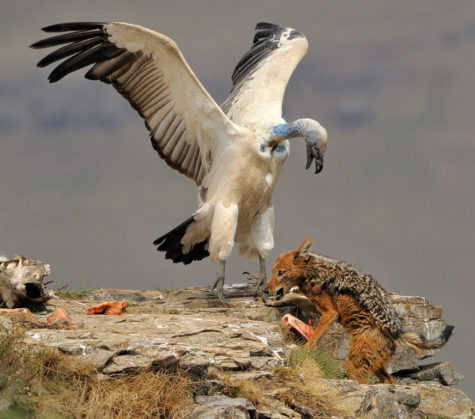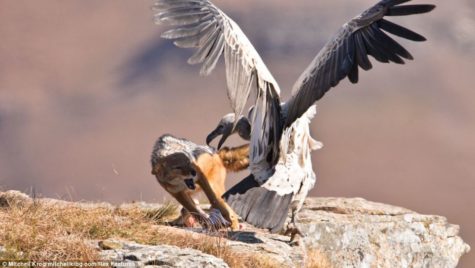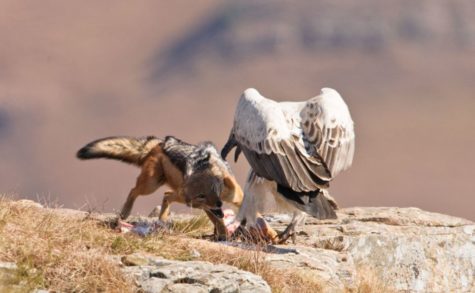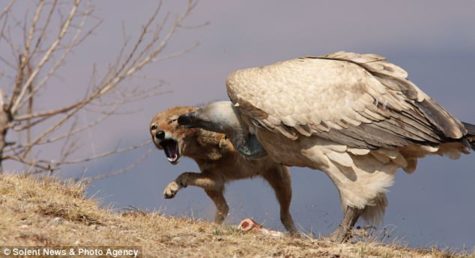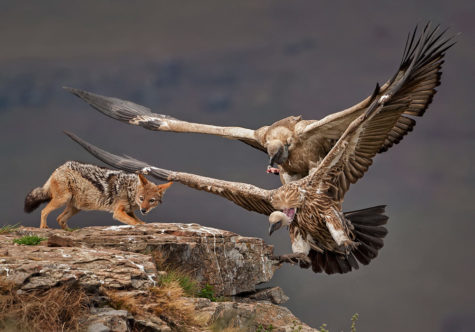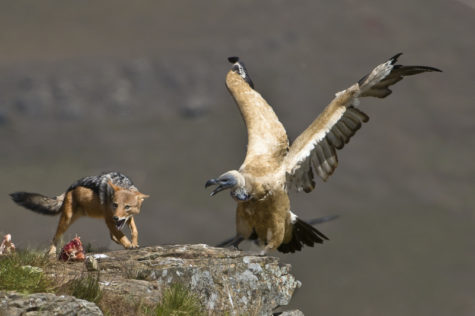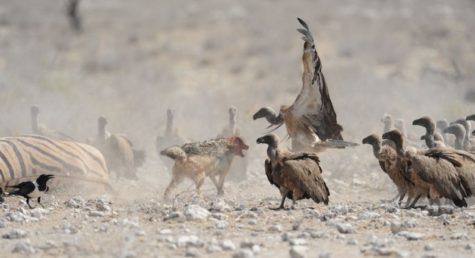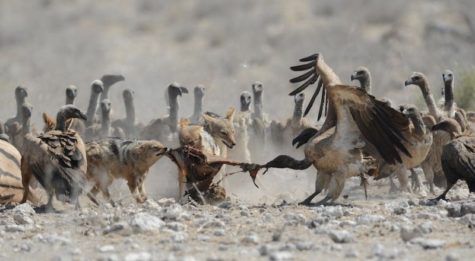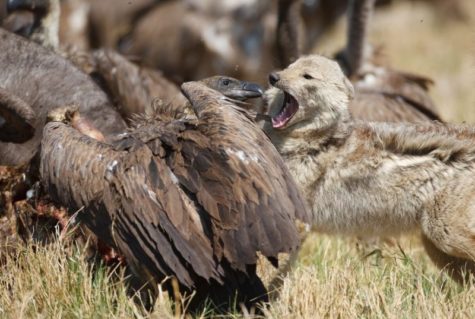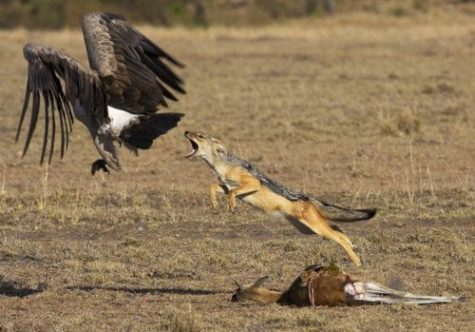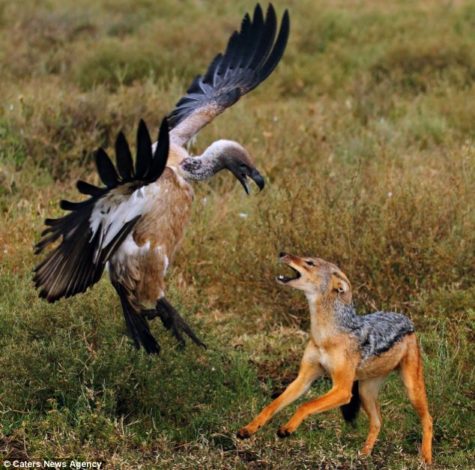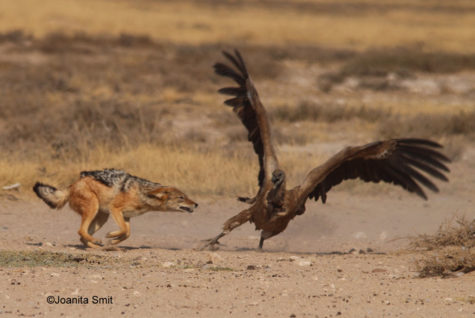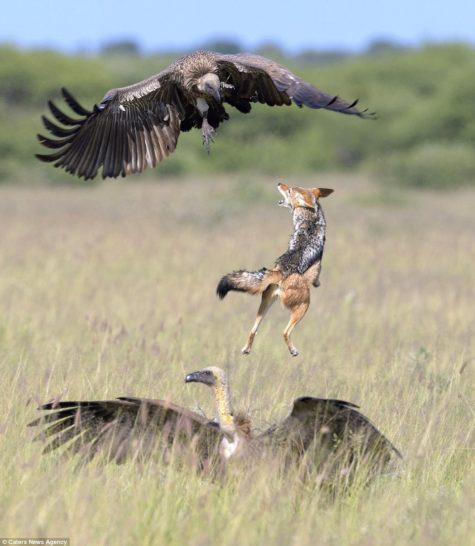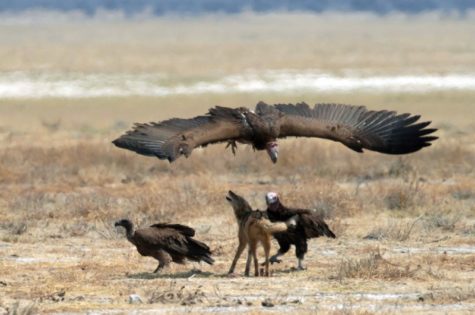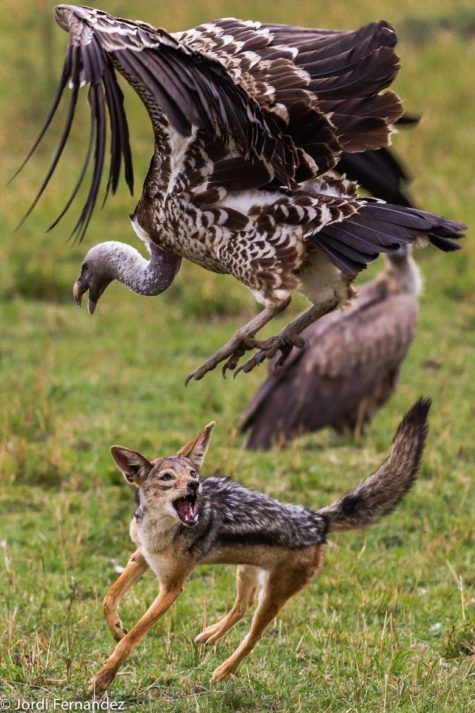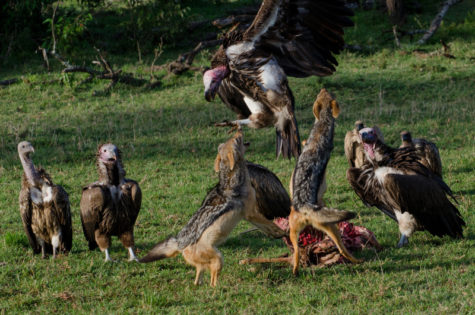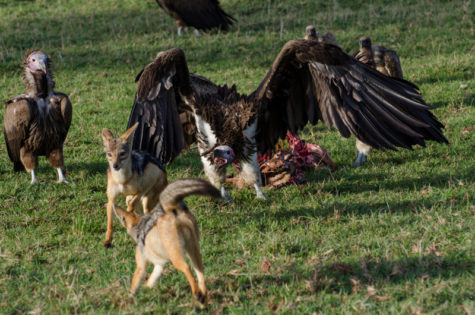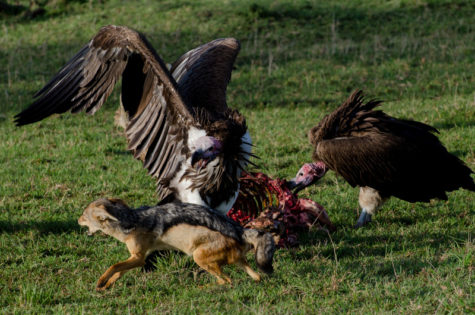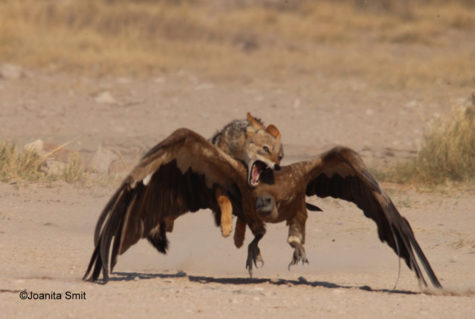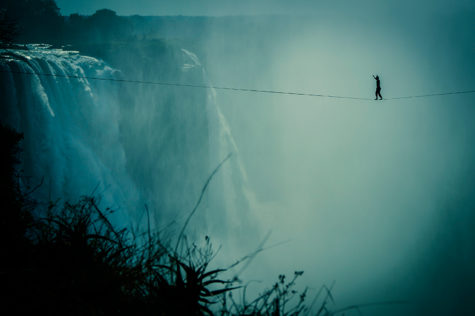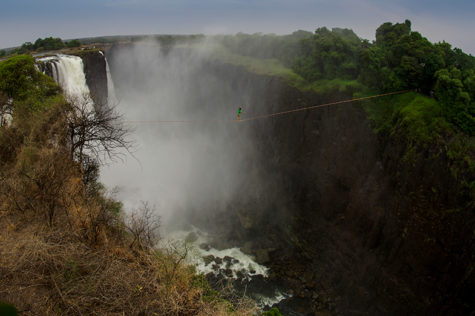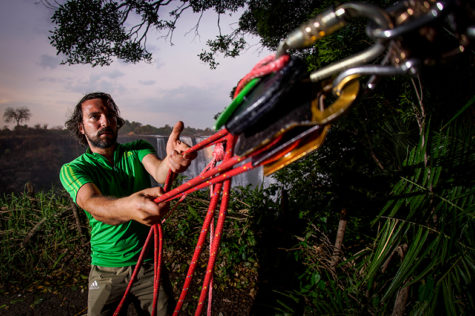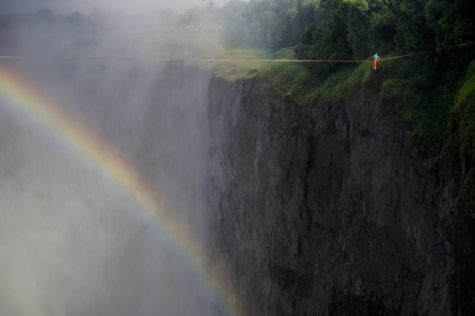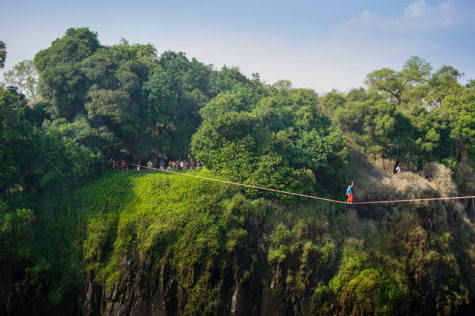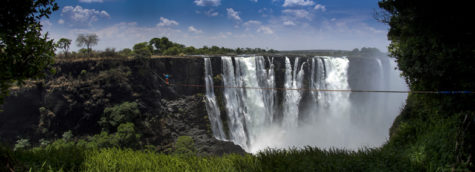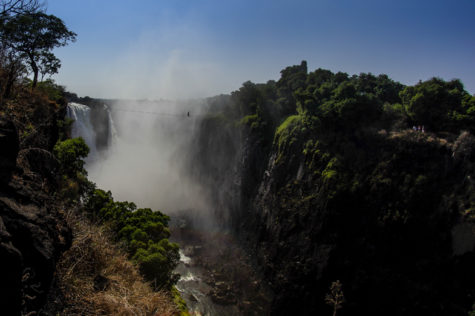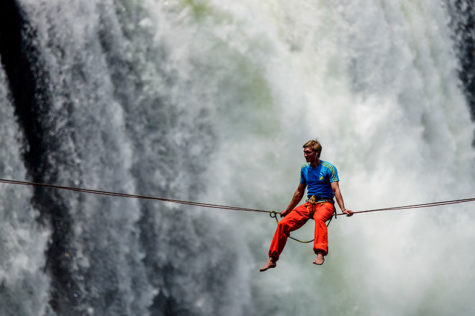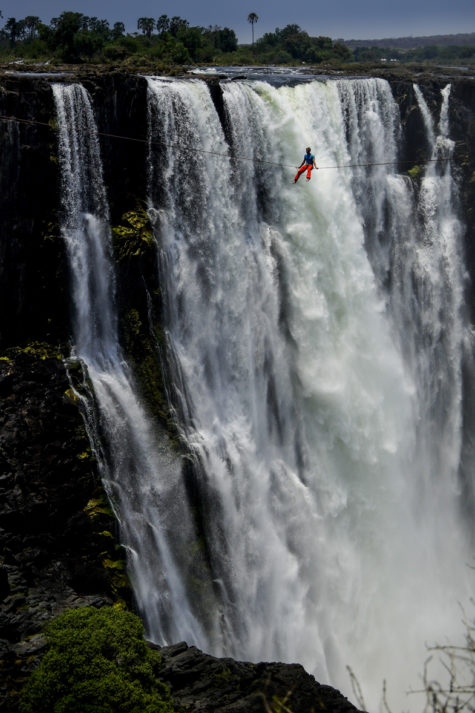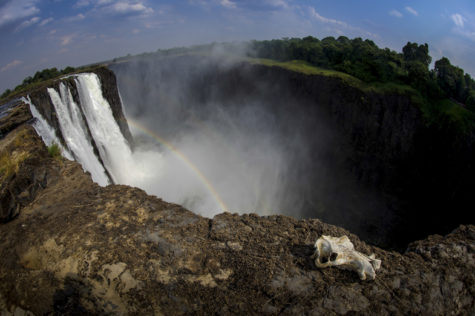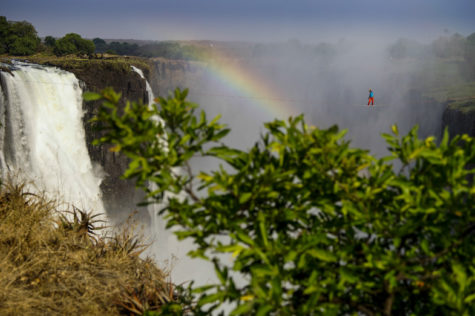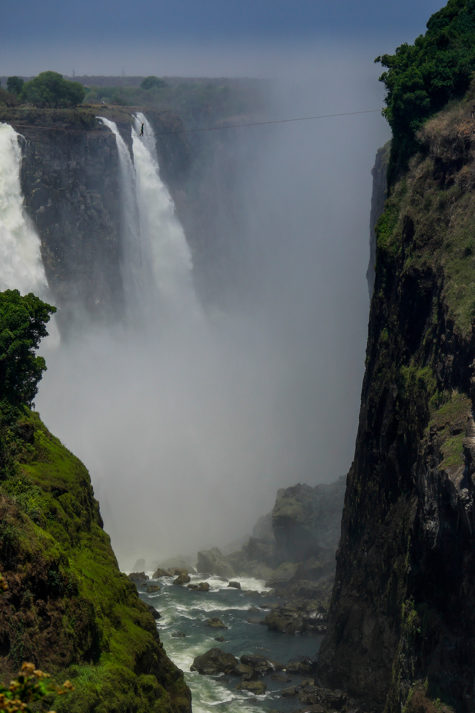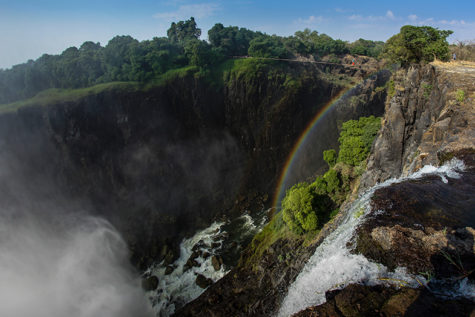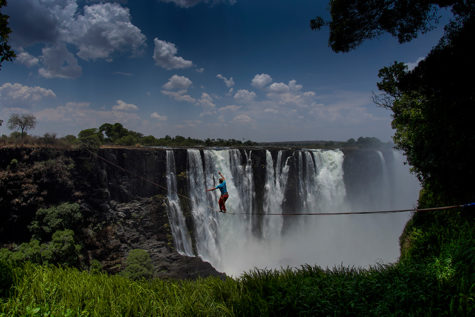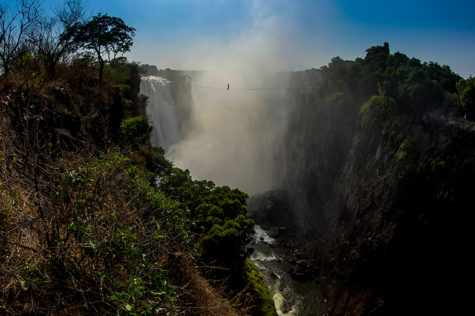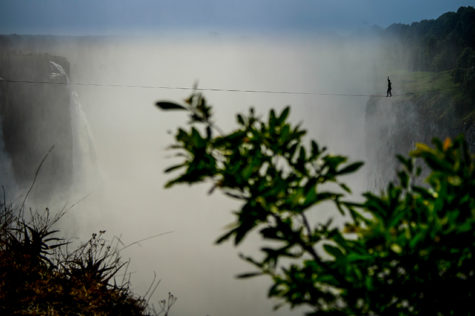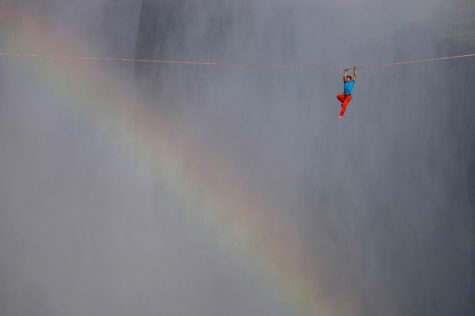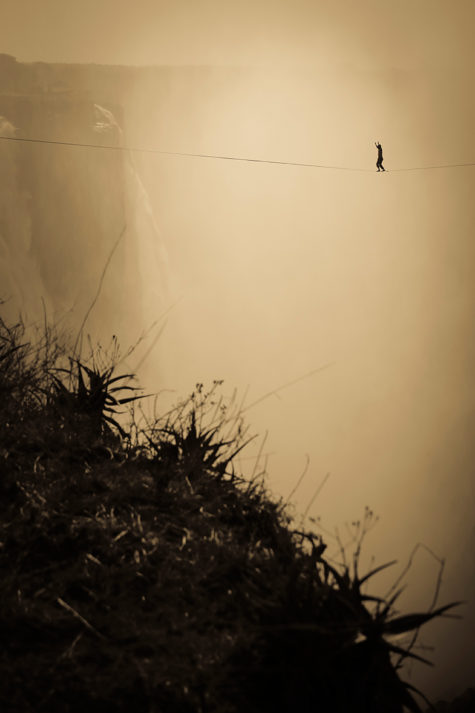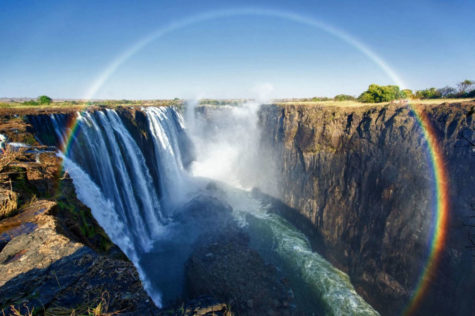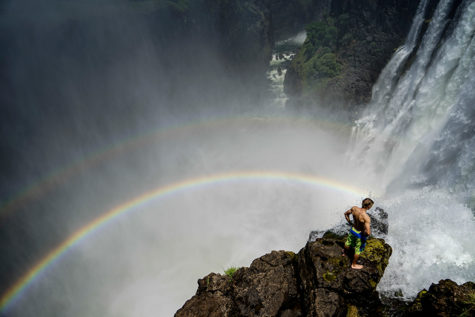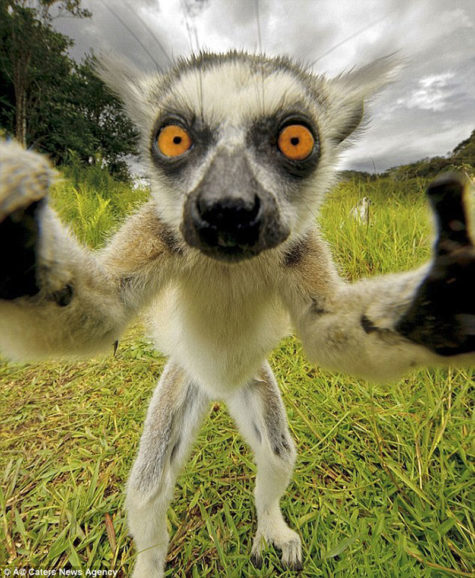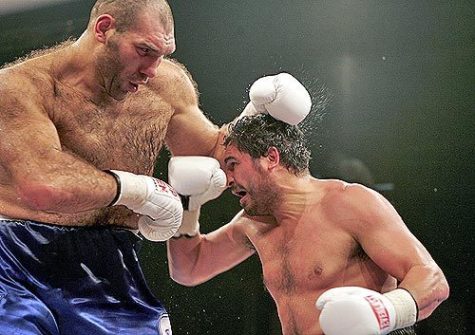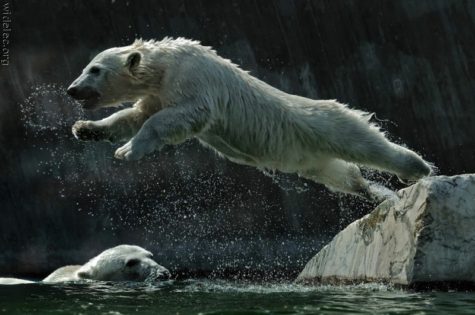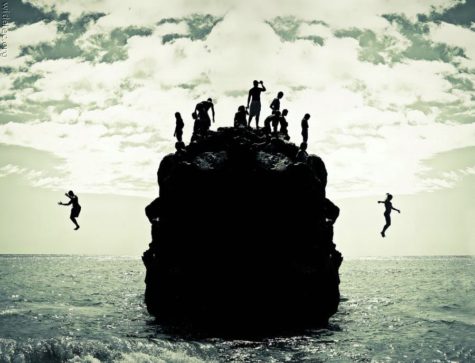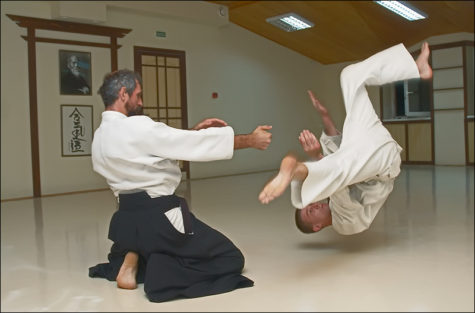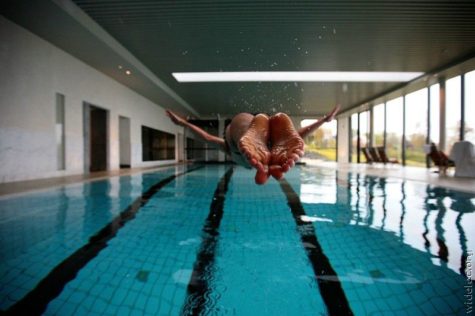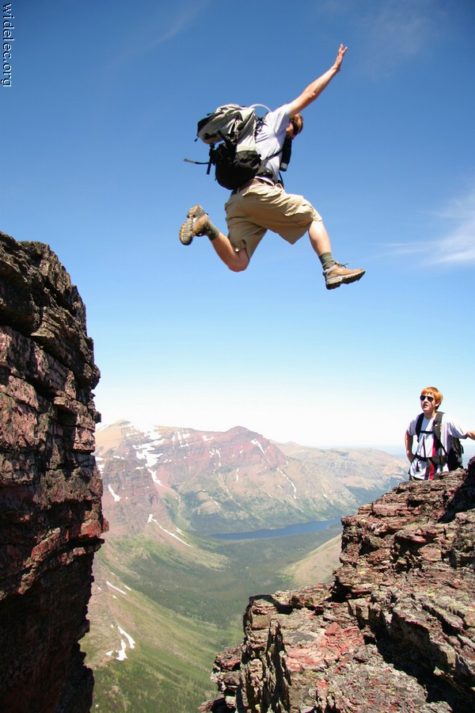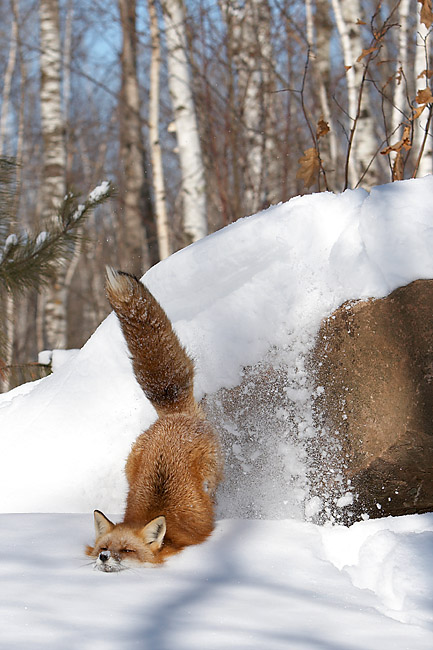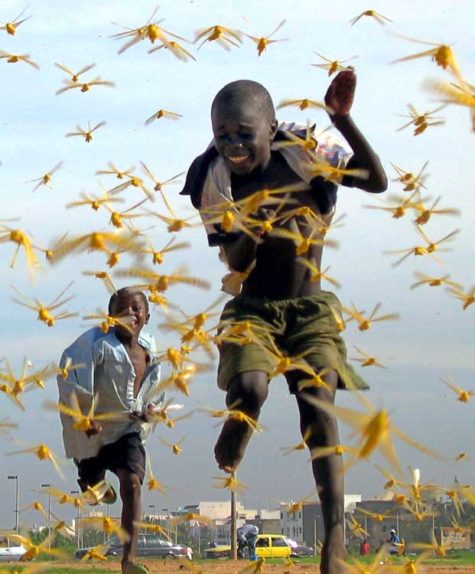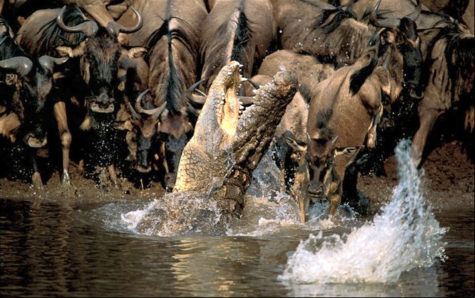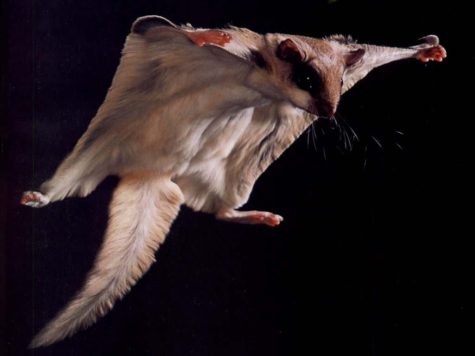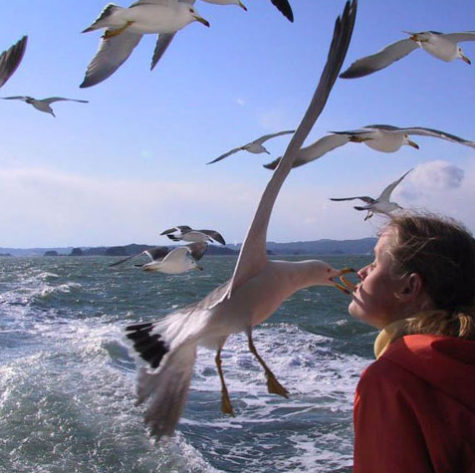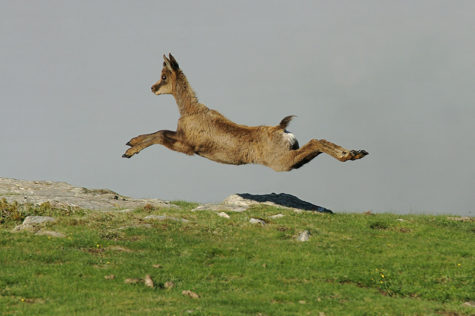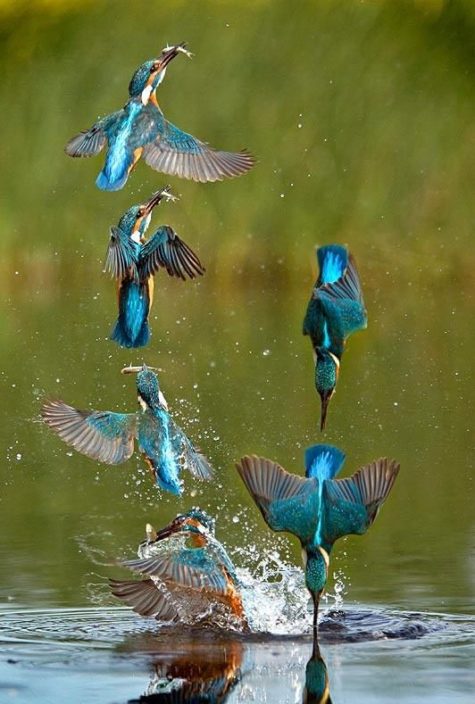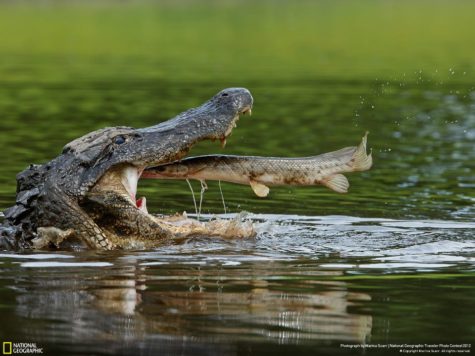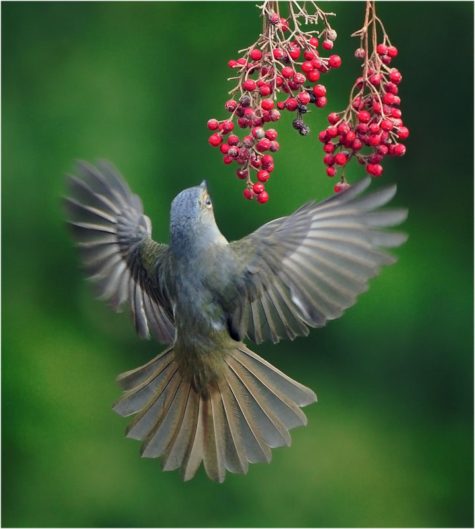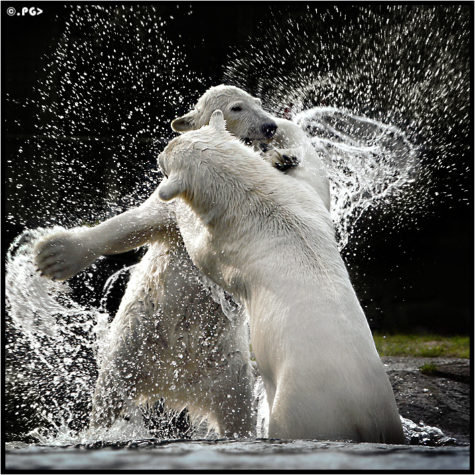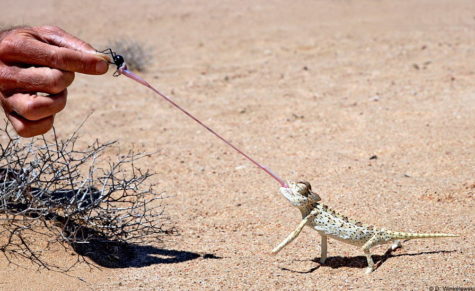Action
It’s A Bail Out!

I spent several hours looking for a larger image of this fun gif, but I did not find anything. So sorry.
Some Fun Art

I absolutely love these depictions of disastrous incidents. These paintings are by a Guatemalan artist Isaias Hernandez. Enjoy the drama!











Meanwhile, at the farm!

There’s a story here! That’s for sure. LOL!
Jackals vs Vultures
Jackals and Vultures survive on carrion, and sometimes come into savage competition for a meal. Sharp talons and ferocious beaks versus strong jaws and pointy teeth, the battles can be vicious, violent confrontations.
The carcass was put out for the vultures so that visitors to the Giants Castle Nature Reserve could view them closer, but the vultures were far too late by the time they arrived as the jackals had already claimed it. And it looks like the Jackals won this round.
Not all the fighting looks this simple and tidy. More often, a huge crowd shows up to claim the carrion, and it’s loud, rowdy, and dusty, as you can see from the following photos.
When it’s one on one, the Jackal and Vulture seem to be evenly matched in size, savagery, and vicious determination.
But, with vultures, there’s never just the one!
Sometimes, even with reinforcements, the Vultures win the meal.
But there are days when a Jackal gets the upper hand.
Vertigo At Victoria Falls
Imagine trying to balance on a stretch of nylon webbing that’s just an inch in width. Now imagine walking 298 feet across said webbing, suspended above a 328-foot drop in front of the biggest screen of tumbling water on the planet. For many, it might sound like the stuff of nightmares, but for a couple of Europeans, such a challenge was their dream – and a dream that was realized in remarkable fashion in 2014.
Step – or perhaps edge – forward those men in question: Lukas Irmler, a 26-year-old artist and professional sportsperson from Germany, and Reinhard Kleindl, a 34-year-old Austrian writer and athlete. The pair share a passion for slacklining, which is a balancing discipline dissimilar to tightrope walking in two important ways. Slacklining utilizes flattened webbing rather than a strong metal rope; plus, the webbing is far more flexible and simpler to manipulate to a preferred tension level.
Moreover, the equipment employed in slacklining is considerably more portable than that of tightrope walking, which makes it the ideal sport to perform in or around all kinds of arenas – like, say, one of the Earth’s biggest waterfalls.
Irmler and Kleindl stumbled upon an image of Victoria Falls in Zimbabwe when looking for suitably inspiring slacklining locales. The enormous waterfall is 5,604 feet in width and 354 feet high.
“We were instantly hooked,” Kleindl explained of the time when the men saw the Victoria Falls picture. He added, “But we thought, ‘This is out of our range.’” Their hesitance is perhaps understandable: even the smallest of Victoria Falls’ main gorges is 360 feet across at its river exit point. To traverse it, then, Irmler and Kleindl’s slackline would have to stretch to a length that, relatively recently, was virtually at world record level.
Of course, there was another – potentially dangerous – issue in the shape of the Zambezi River thundering over the falls. “Nevertheless, we pursued the idea,” Kleindl added.
The pair certainly had some qualification for the task, though. Indeed, Kleindl had previously slacklined approximately 300 feet across Austrian soccer team SK Sturm Graz’s UPC-Arena, and he walked a similar length at a climbing festival in Iran. Irmler, meanwhile, has been slacklining professionally since 2011.
Such experience didn’t, however, allay all of the pair’s nerves. “Even for us,” Irmler revealed, “[Victoria Falls] was a length that we couldn’t master safely, so it was a huge challenge. We had to enhance our athletic skills.”
Any fears or intense physical preparations, though, were to prove only part of the men’s concerns. Months passed before Kleindl and Irmler were even granted the required permits to attempt their slacklining challenge, while setting a date was conditional on the height of the Zambezi River. “If the water level is too high,” Kleindl pointed out, “the spray rises up to 300 meters [984 feet] and you can’t do anything.”
In fact, the Zambezi’s water levels are inconstant from one year to the next – so much so that even boats can only reach the river’s waterfall-facing islets for a limited number of weeks in the calendar. This naturally made it difficult for the slackliners to work out when to erect their highline.
After their schedule was eventually sorted, the pair still had to embrace an element of chance. By the time they arrived in southern Africa, for example, they had no idea how their line would be secured on the gorge’s far side. However, a stroke of luck came in the form of a tree located a little less than 300 feet from the start point. According to Kleindl, this enabled a “clean highline set-up.”
“We did get permission to put in some temporary bolts,” Kleindl explained. “But in our sport – as in other mountain sports – we want to leave no traces behind. Especially since the Zimbabwe Parks and Wildlife Management Authority trusted in us.” Carefully tied webbing, then, would have to do. It was November 2014, and the scene was set for the perilous feat to take place.
Once the highline was safely rigged – a seemingly low-tech process aided by a modest lead weight, a fishing line and a slingshot – Kleindl and Irmler had to decide which one of them would start. Following the toss of a coin, the job fell to Kleindl.
Day one, however, saw both Europeans successfully cross – or send, to use slacklining parlance – the highline, minus any footwear and without falling. Not that a slip would have resulted in a dramatic plunge into the waters below, it should be added: both men, fortunately, were attached to safety ropes.
Even with such security measures, though, balancing on webbing that is one inch wide whilst elevated at 328 feet – and next to one of Mother Nature’s most ferocious creations – is no mean feat.
Kleindl, for example, revealed that while he is used to dealing with cold, wet and windy conditions during mountain slacklining expeditions, the special circumstances in Zimbabwe still made for a unique experience. As he said, “This intense spray that comes from below and from the side, that soaks your line, makes it heavy and impairs your vision, is quite a challenge.”
Irmler, meanwhile, suggested that, despite a 72-hour window of opportunity, it was difficult heading into the task with the requisite amount of poise. “You often underestimate how much pressure you put on yourself to send a line, especially when it’s so long and the conditions are so unpredictable and ever changing,” he explained.
The German added that it was equal parts astonishing and rewarding that both slackliners completed the feat on the first day of trying: “That way we had time to play with the line and to hang loose,” he commented.
During their time at Victoria Falls, the daredevils were naturally afforded a uniquely up close and personal view of one of the world’s most powerful waterfalls. At one point, Kleindl and Irmler were also witnesses to a magnificent circular rainbow created by the falls’ spray.
The slacklining achievement is one that neither man will forget in a hurry, particularly after investing so much time into making it happen. “If it wasn’t the very best [challenge], we wouldn’t have waited for two years to experience this moment and get this incredible chance,” the pair said.
Following their success, Kleindl and Irmler christened their Victoria Falls highline “Nyami Nyami,” in reference to the Zambezi’s serpentine river god. The deity is said to have come to the aid of drought-stricken locals by offering them meat from his own body.
Source: Environmental Graffitti

